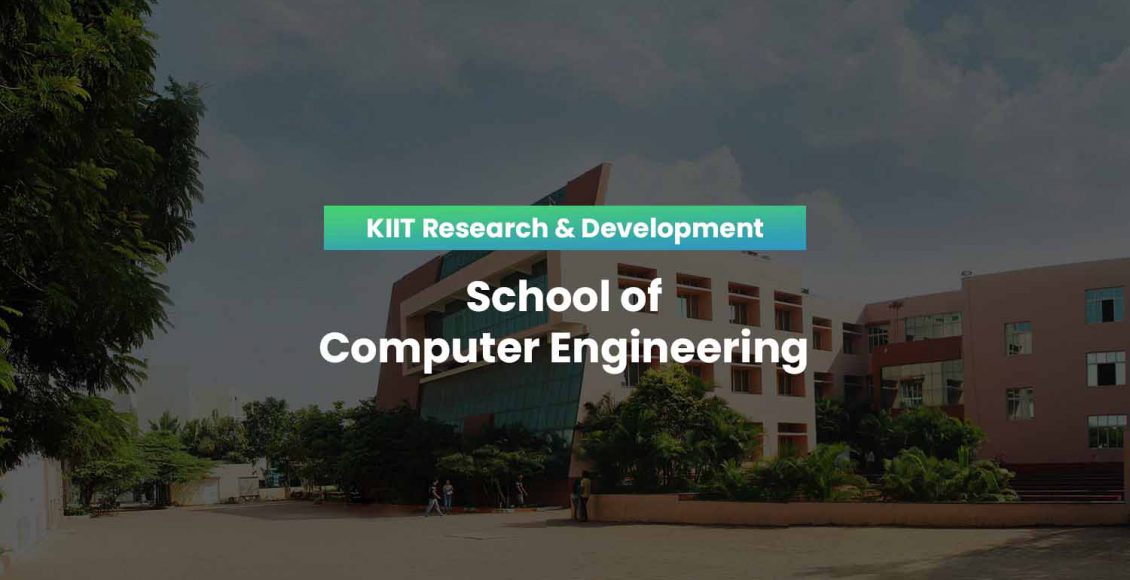School of Computer Engineering (February 2022)
Ph.D. Degree Awarded (Provisional)

Dr. Junali Jasmine Jena
Supervisor: Dr. Suresh Chandra Satapathy, School of Computer Engineering
Thesis Title: Social Group Optimization: Analysis, Modifications and Applications
In this work, stability analysis of social group optimization (SGO) has been performed through Von Neumann technique which ensures the convergence of SGO, theoretically as well as experimentally, within a range of values of the different parameters. Further, some suitable modifications have been performed to make SGO applicable to different domains. Also these modified algorithms have been applied to some niche areas and to some popular problems, in which a competitive performance of these variants of SGO, have been observed.
Journal Papers
1. Jena, J. J. andSatapathy, S. C. (2021), A New Adaptive Tuned Social Group Optimization (SGO) Algorithm With Sigmoid-Adaptive Inertia Weight for Solving Engineering Design Problems,Multimedia Tools and Applications, pp.1–35, DOI : 10.1007/s11042-021-11266-4 (IF: 2.757).
Abstract
In this paper, we have reviewed some of the inertia weight strategies and applied them to Social Group Optimization (SGO) to study the changes in its performance and have performed a thorough analysis on the same. Following the analysis, the need of a more generalized inertia weight strategy was felt which could be used in parameter tuning for different variety of problems and hence Sigmoid adaptive inertia weight have been proposed. SGO with sigmoid-adaptive inertia weight (SGOSAIW) has been simulated on twenty-seven benchmark functions suite and further simulated on few mechanical and chemical engineering problems.
2. Jena, J. J. andSatapathy, S. C. (2021), Mortality Prediction of Victims in Road Traffic Accidents (RTAs) in India Using Opposite Population SGO-DE based Prediction Model, Journal of Scientific and Industrial Research, Vol. 80, No. 11, pp. 1001–1007 (IF: 1.24).
Abstract
Getting immediate and appropriate care for the victims of Road Traffic Accidents (RTAs) in countries like India with huge population is a challenging job. In this paper a new hybridized evolutionary algorithm has been proposed for hyper-parameter tuning of the hyper-parameters of the prediction models using which mortality prediction of victims of RTAs in India have been made. The proposed methodology Opp-SGO-DE has been used for parameter tuning in prediction algorithms like Random Forest and Support Vector Machine and promising results were found from the experimentation.
Conference Papers
1. Chandak, A.V., Ray, N.K., and Puthal, D. (2021), Performance Analysis of Classifier Techniquesat the Edge Node,InIEEE International Symposium on Smart ElectronicSystems (iSES-2021, Jaipur, India, 2021.
Abstract
IoT gadgets installed in smart homes ease human life and they can be controlled from remote locations. These gadgets generate different categories of data from various sensors. Sometimes immediate data processing is required to provide a quick response to the smart home applications. Edge nodes dwell at the edges of IoT gadgets for faster processing of data. In this paper, we have used a rule-based classifier that categorizes generated data from sensors and allocates edge nodes for the near real-time data processing. Finally, we assess the performance of proposed classifier with other approaches.
2. Pradhan, A.K., Rout, J.K., Maharana, A.B., Balabantaray, B.K., and Ray, N.K. (2021), A Machine Learning Approach for the Prediction of Fetal Health Using CTG, In Proceedings of International Conference on Information Technology (OCIT-2021),Bhubaneswar, India, pages 239–244,2021, ISBN 978-1-6654-1664-1.
Abstract
This study aims to see how well machine learning models are suitable for the prediction of fetal health using CTG data. The Classification algorithms that have been used to get the lowest prediction error are Logistic Regression, KNN, Random Forest, and Gradient Boosting Machine (GBM). The performance of each model was evaluated in terms of accuracy, precision, recall, and F1-score. It has been observed that Random Forest has the highest accuracy of 0.99.
3. Nanda, S., Tripathy, D.P., Mohaptra, R., and Ray, N.K. (2021), Application of 1-Dimensional Convolution Neural Network based Machine Learning Approach for Prediction of Air Quality Index,In Proceedings of International Conference on Information Technology (OCIT-2021), Bhubaneswar, India, pages 341–346, ISBN 978-1-6654-1664-1.
Abstract
Machine learning approaches are suitable for solving such types of problem. In this paper, a few robust machine learning approaches, namely, Multiple Linear Regression, Polynomial Regression, Ridge Regression, Lasso Regression, SVM Regression (RBF and Linear), Multilayer Perceptron, Decision Tree Regression, Convolutional Neural Network (CNN), have been employed for analysing air quality of some of themajor cities of Kerala. The obtained values of coefficient of determination (R2) demonstrated astounding presentation of 1-DimensionalCNN based on air quality models because of the high R2 values that produces efficacious data assessment.
4. Hussain, S., Nanda, S.,Barigidad, S., Akhtar, S.,Suaib, Md., and Ray, N.K. (2021), Novel Deep Learning Architecture for Predicting Heart Disease Using CNN, In Proceedings of International Conference on Information Technology (OCIT-2021), Bhubaneswar, India, pages 353–357, ISBN 978-1-6654-1664-1.
Abstract
This paper proposes a novel deep learning architecture using a 1D convolutional neural network for classification between healthy and non-healthy persons to overcome the limitations of classical approaches. Various clinical parameters are used for assessing the risk profile in the patients which helps in early diagnosis. Various techniques are used to avoid overfitting in the proposed network. The proposed network achieves over 97% training accuracy and 96% test accuracy on the dataset. This is compared in detail with other classification algorithms using various performance parameters which proves the effectiveness of the proposed architecture.
5. Naidu, D., and Ray, N.K. (2021), Review on Authentication Schemes for Device Security inLoRaWAN,InProceedings of International Conference on Information Technology(OCIT-2021),Bhubaneswar, India, pp.387–392, ISBN 978-1-6654-1664-1.
Abstract
IoT is seen as an ultramodern technology with a wide scope of research, multi-factor Authentication being the most popular atapplication layer security to achieve integrity and confidentiality. But when it comes to provide security at device level this becomes very challenging. Weneed better solution and platform with good ecosystem and costeffectiveness. One such promising technology is LoRaWAN, as it offers a secure platform to work with heterogeneous devices andspeedy transmission over the air. Thisarticle discusses review on authentication schemes and highlightsthe issues and security solution in current state of art with LoRaWAN.
6. Sahu, S.K., Mohapatra, D.P., and Ray, N.K. (2021), An Ensemble-based OutlierDetection Approach on Intrusion Detection,InProceedings of InternationalConference on Information Technology (OCIT-2021), Bhubaneswar, India, pages 404–409, ISBN 978-1-6654-1664-1.
Abstract
In this study, an ensemble-based outlierdetection approach is proposed to detect the outliers on intrusiondatasets. The proposed approach consists of alocal outlier factor, isolation forest, and one-class SVM methodto identify the outliers on intrusion datasets. The majorityvoting method is used to finalize the connection as an outlier byaveraging the outlier indexes generated by the approach. Theresult of the proposed method is compared before and afterdetection of the outlier obtained from the popular supervisedclassification methods. It achieved a betterclassification result and drastically reduced the training error.
7. Nayak, M.R., Sahoo, D.K., Sahoo, J.P., Satapathy, L.M., Dev, P.P. (2021),An Enhanced Dynamic Image Watermarking Framework Based on Phase Congruency and Saliency,International Conference in Advances in Power, Signal, and Information Technology (APSIT), 2021.
Abstract
Perceptual watermarking approaches achieve better image fidelity with the advantages of the Human Visual System. Saliency uses the advantages of this feature by identifying different visually perceptual regions of an image. Additionally, Phase congruency exploits those features of digital images by detecting the corner points. In the proposed method, the information hiding capacity is generated from both bit depth maps created by comparing phase congruency results and saliency outcomes of an image that ascertains the low perceptually visible pixels (utilizing the Least Significant Bit technique).
8. Roy, S., Biswas, B., Kantha, B., Nayak, M.R. (2021),Design of n-WO3 Thin Film Hydrogen Sensor with IoT Technology, Advances in Distributed Computing and Machine Learning, pp.66–72.
Abstract
Smart and connected sensing system has been one of the most important areas of focus under IoT applications. The Efficient and high sensitive sensors, different fabrication design systems and smart technology have together started to revolutionize the sensor system landscape. Sensory data taken over a wide temporal range can detect ailments that cannot be otherwise detected by conventional diagnosis methods. A Pd-surface sensitized Tungsten trioxide (WO3) thin film hydrogen sensor system has been proposed to develop a sensor array that can allow continuous monitoring of leakage of methane gas.


